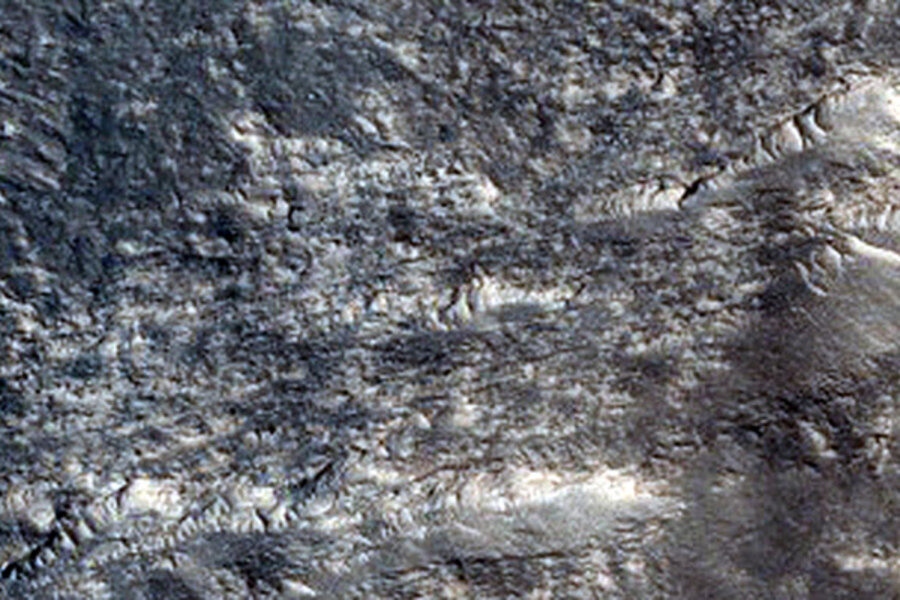Huge flood on Mars? Orbiter data shows evidence of ancient megaflood.
Loading...
| Los Angeles
The face of Mars is dotted with a maze of channels, pointing to possible ancient megaflood episodes.
Now scientists peering below the surface have uncovered the first evidence of underground channels apparently created by flooding — a finding that's expected to further illuminate the role of water in Mars' history.
Using a ground-piercing radar sensor aboard the Mars Reconnaissance Orbiter, a team of scientists created 3-D maps of an equatorial region known as Elysium Planitia and the channels that run underneath the plains.
Besides the contributions from rovers and landers, "our view of the red planet has largely been restricted to looking at the surface" from orbiting spacecraft, said lead researcher Gareth Morgan, a planetary scientist at the Smithsonian Institution.
The research, published online Thursday in the journal Science, offers a new perspective below the Martian surface and hints of past flooding at a time when the planet was mostly thought to be cold and desert-like. The channels remained hidden because the once volcanically active region had been filled in by lava flows hundreds of millions years ago.
Dry channels on the Martian surface were first spied by Mariner 9 in 1971. Later observations by the Viking spacecraft suggested the geologic features were likely carved by water. Mars missions since then have used sophisticated instruments to image these winding channels.
The latest 3-D maps, painstakingly pieced together from radar data collected by numerous spacecraft passes, have already changed scientists' notions: The channels are deeper than expected, a sign that flooding was more extensive than generally believed.
Morgan said the origin of the ancient floodwaters likely came from a deep reservoir and were possibly unleashed by a volcanic eruption.
Brown University Mars expert John Mustard called the new work "totally cool and significant."
"It shows a completely new dimension for considering the evolution of Mars," Mustard, who was not part of the study, said in an email.







